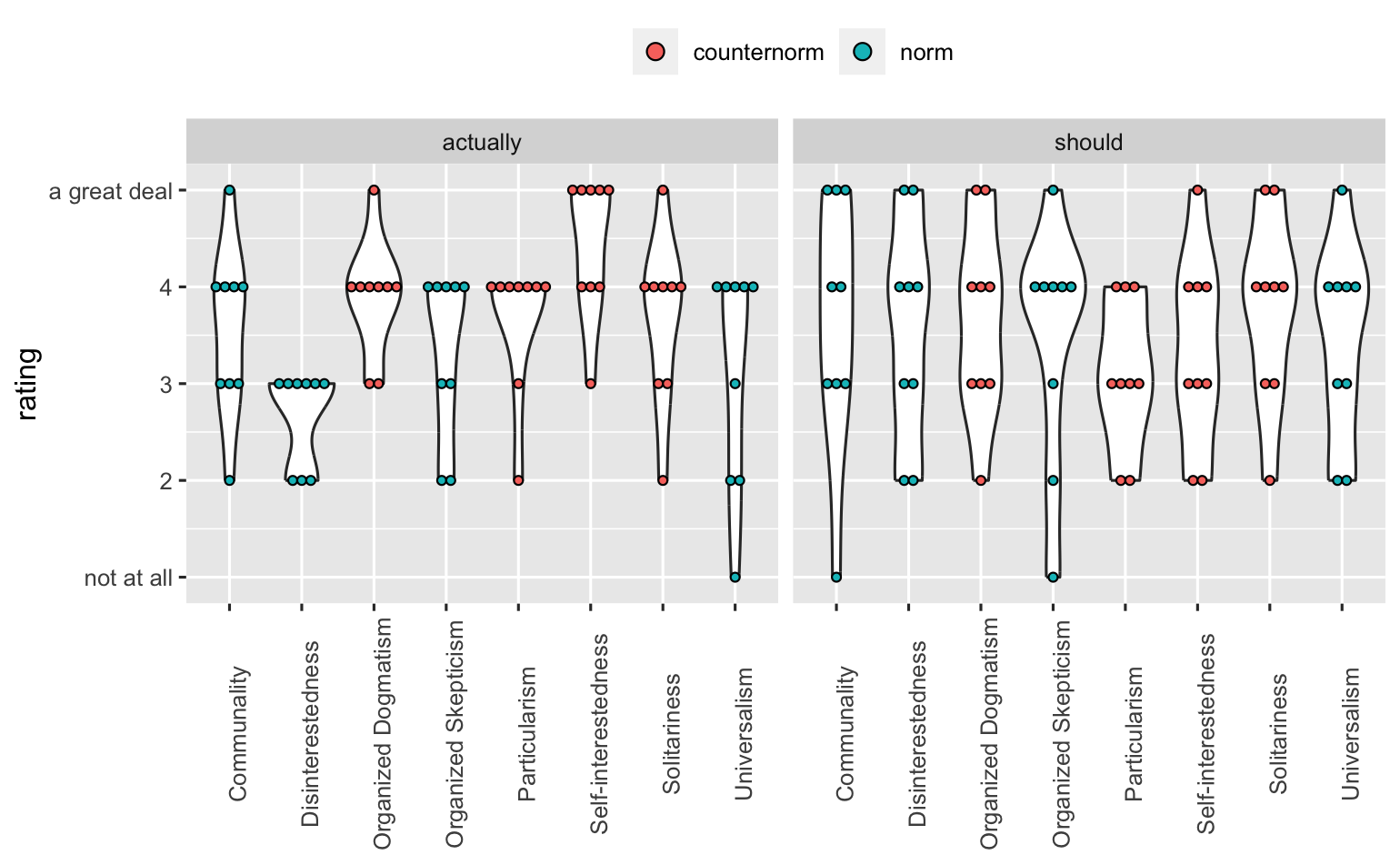Scholars who study science as an activity have tried to describe the characteristic norms and counter-norms that govern research activities. In this semester’s PSYCH 490 class, we’ve read Merton (Merton 1973), Mitroff (Mitroff 1974), and a couple of empirical articles (Kardash and Edwards 2012) that focus on how often scientists should versus actually embrace these values. We’ve even created a document that summarizes the entire data processing workflow, from gathering data from our own colleagues to visualizing it.

I’ve struggled a bit to come up with a visualization about our own results This one seems to be the best so far. Perhaps not surprisingly, and in accord with empirical data (Kardash and Edwards 2012), undergraduate trainees rate scientists actual adherence to aspirational norms lower than what those scientists ought to do. Still, the students aren’t completely jaded, so there is hope we can turn this crisis of credibility into an opportunity.